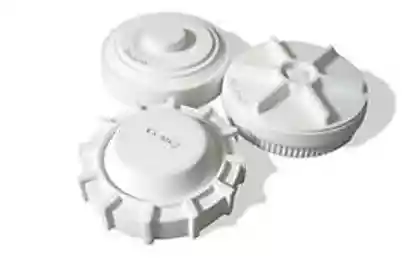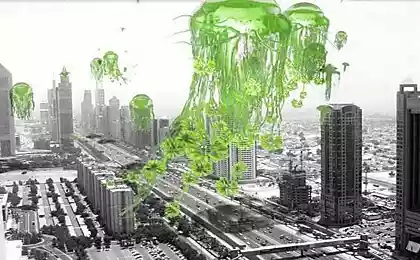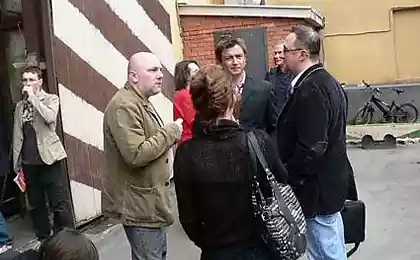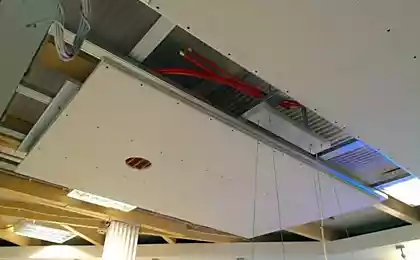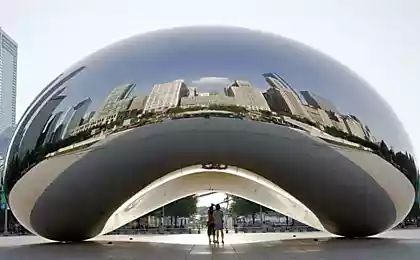708
The skyscraper which will clear the air
Earthworms are among the most industrious creatures in nature. Soft slippery invertebrates are magnificent underground engineers who eat and recycle the land, paving the way in the soil beneath our feet. Earthworms create pores through which in the ground can permeate oxygen and water, and carbon dioxide to enter, and on the way eat toxic substances.
Inspired by the altruistic role of earthworms, the South Korean designer Lee Sangsoo (Lee Seungsoo) has developed an urban skyscraper called "Urban earthworm" (Urban Earth Worm): tubular, burrowing structure that will clean the air and soil pollution in cities, helping to feed the urban residents.
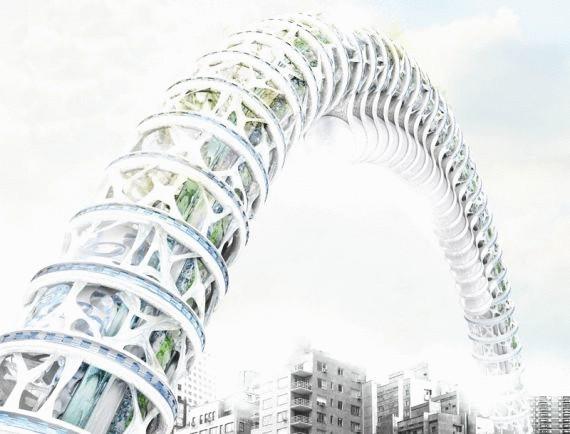
The designer does not deny that his sculpture mimics the shape of earthworm, and his personality. Narrow cylindrical architectural elements which bend and go down, stretching horizontally across the city.
At the top of the structure are tubular elements, filled with soil where they can grow whole gardens of trees and plants. This green area as an urban farm will help clean the city air, and provide food for the inhabitants of the city, as does Sangsu.
An inherent advantage of urban farming is that it can greatly add greenery in stone cities, reduce harmful emissions, increase the cool shade against the stifling heat of the city.
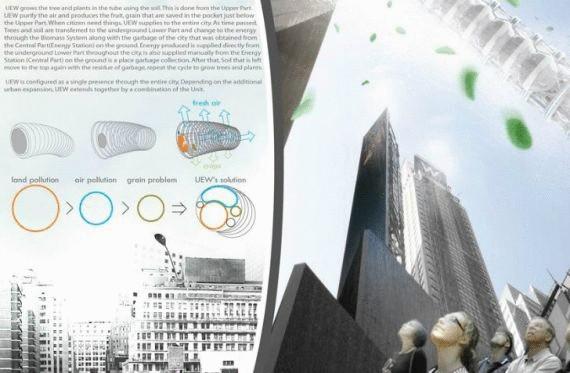
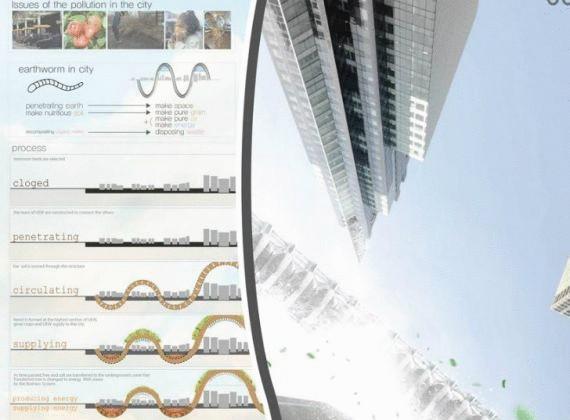
The energy station will be located inside one of the sections "earthworm", which is under the ground. This part will process the garbage of the city into biomass, which can then be used to produce electricity for the skyscraper and the urban grid. Biomass could also be used to fertilize soils for growing trees and crops in upper levels.
"The soil is periodically descends to a section of power plants and mixes with the biomass. It will be down some time for filling in nutrients," says Lee Sangsu. "When this process is complete, saturated soils will rise again to the upper levels, and the next batch of soil will be moved down."

Fantastic, but a useful one for its purpose, skyscraper recently won an honorable mention in the book is one of the most famous magazines about architecture and design of the 21st century, eVolo "Competition of 2013 skyscrapers" (2013 Skyscraper Competition).
In honor of the Competition of Skyscrapers 2013, the magazine published a collector's edition of their outstanding book "eVolo Skyscrapers". The book is in two volumes, 1,300 pages, which describes the top 300 projects in the last year. Copies of the book made 150 copies worldwide.
Source: /users/104
Inspired by the altruistic role of earthworms, the South Korean designer Lee Sangsoo (Lee Seungsoo) has developed an urban skyscraper called "Urban earthworm" (Urban Earth Worm): tubular, burrowing structure that will clean the air and soil pollution in cities, helping to feed the urban residents.

The designer does not deny that his sculpture mimics the shape of earthworm, and his personality. Narrow cylindrical architectural elements which bend and go down, stretching horizontally across the city.
At the top of the structure are tubular elements, filled with soil where they can grow whole gardens of trees and plants. This green area as an urban farm will help clean the city air, and provide food for the inhabitants of the city, as does Sangsu.
An inherent advantage of urban farming is that it can greatly add greenery in stone cities, reduce harmful emissions, increase the cool shade against the stifling heat of the city.


The energy station will be located inside one of the sections "earthworm", which is under the ground. This part will process the garbage of the city into biomass, which can then be used to produce electricity for the skyscraper and the urban grid. Biomass could also be used to fertilize soils for growing trees and crops in upper levels.
"The soil is periodically descends to a section of power plants and mixes with the biomass. It will be down some time for filling in nutrients," says Lee Sangsu. "When this process is complete, saturated soils will rise again to the upper levels, and the next batch of soil will be moved down."

Fantastic, but a useful one for its purpose, skyscraper recently won an honorable mention in the book is one of the most famous magazines about architecture and design of the 21st century, eVolo "Competition of 2013 skyscrapers" (2013 Skyscraper Competition).
In honor of the Competition of Skyscrapers 2013, the magazine published a collector's edition of their outstanding book "eVolo Skyscrapers". The book is in two volumes, 1,300 pages, which describes the top 300 projects in the last year. Copies of the book made 150 copies worldwide.
Source: /users/104
